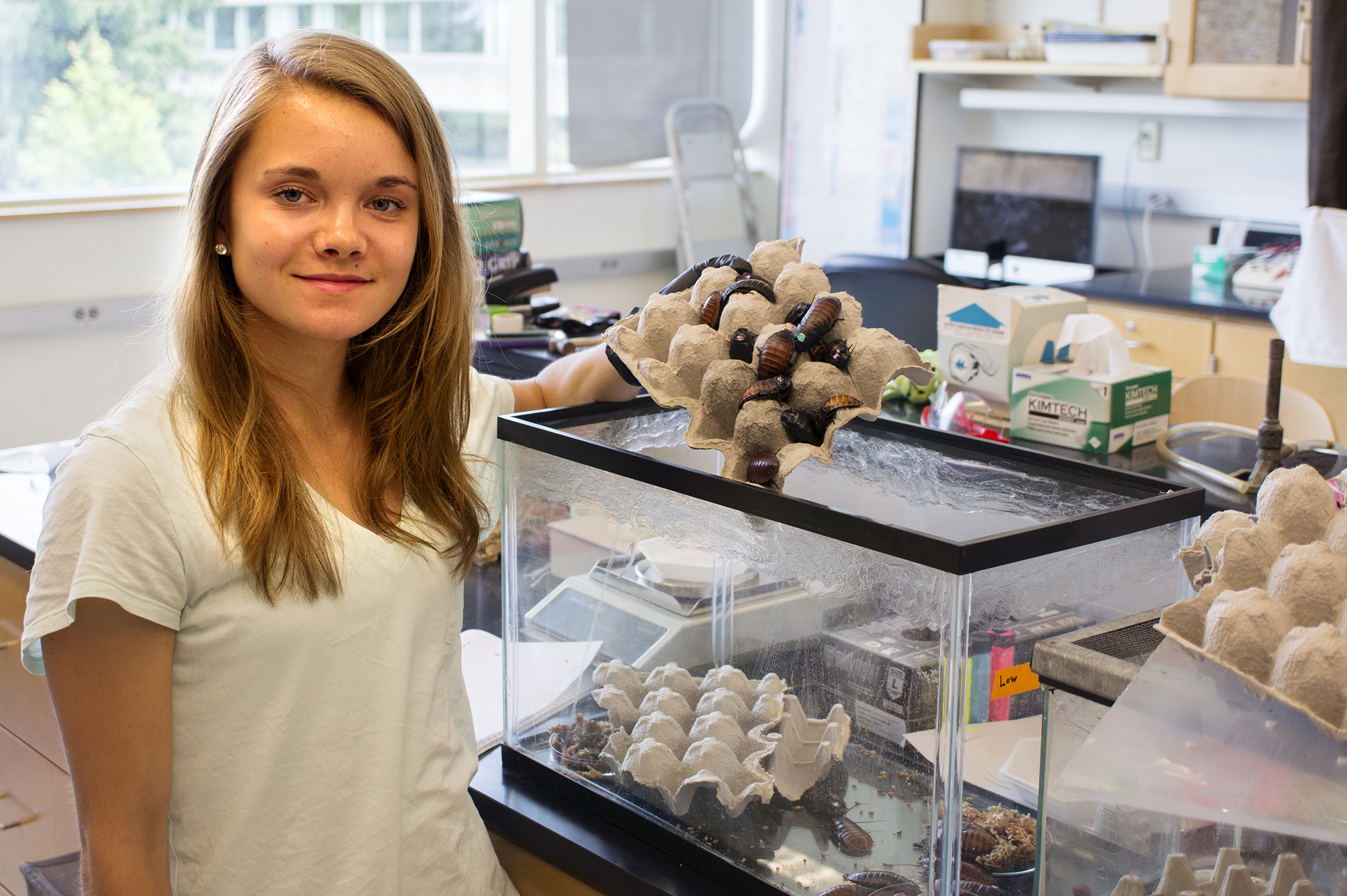
Although many children spend their summer vacations playing with bugs, few college students can say they get paid to do the same. While conducting an independent behavioral study of Madagascar hissing cockroaches may not exactly be “playing,” Emma Anderson ’17 is enjoying it nonetheless. Anderson, a prospective biology major, is working under the guidance of Visiting Assistant Professor of Biology Heather Mallory to examine the relationship between the cockroaches and the mites that live on them.
Anderson had never had any experience with the insects before, and was surprised to find that “they are very docile creatures.” Anderson is conducting two studies, both of which are a continuation of Felipe Garcia’s ‘14 senior thesis. Garcia’s study examined whether or not mites remain loyal to a specific cockroach; while Anderson’s project focuses on the behavior of the popularly nicknamed “hissers” themselves.
While the cockroaches and mites are believed to live in commensalism, with the mites benefitting from the roach’s moisture and nutrients while the host remains unaffected, Anderson decided to test this theory. She designed her own experiment to examine whether or not the number of mites living on a roach affected the host’s behavior.
Anderson observed the behavior of individual cockroaches, noting whether their mite level was low, medium or high, then removed the mites and observed the cockroach’s subsequent demeanor. She found that the number of mites on a cockroach does not affect its behavior, although as the mite count increases, overall activity decreases.
Anderson laughingly described herself trying to count the mites, which require a microscope to see. “Well neither the cockroaches nor the mites like light, so when you put [the cockroach] under the microscope, [the mites] scurry to the other side and you have to keep flipping them over,” she explained. “The ‘number’ of mites is definitely an estimation.”
Her second study, which examines territorial aggression and hissing, is now underway. Anderson will be comparing dominance displayed in male-male interactions, which is almost always aggressive, and the dominance displayed in male-female interactions, which can result in a mating ritual or aggression.
She described the project as “a great learning experience” and said it has “definitely made [her] want to do more research in the future,” although maybe not with the ‘hissers.’ Anderson would like to do future research on a more molecular level, perhaps pursuing one of her main interests: nutrition.
Emma Anderson is a graduate of Greene High School in Greene, NY.
Posted July 1, 2014
